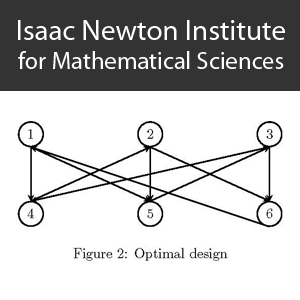Computation of the Fisher information matrix for discrete nonlinear mixed effects models
Duration: 43 mins 17 secs
Share this media item:
Embed this media item:
Embed this media item:
About this item

| Description: |
Ueckert, S (INSERM, Paris)
Tuesday 7th July 2015, 12:00 - 12:30 |
|---|
| Created: | 2015-07-10 13:06 |
|---|---|
| Collection: | Design and Analysis of Experiments |
| Publisher: | Isaac Newton Institute |
| Copyright: | Ueckert, S |
| Language: | eng (English) |
| Abstract: | Despite an increasing use of optimal design methodology for non-linear mixed effect models (NLMEMs) during the clinical drug development process (Mentr´e et al., 2013), examples involving discrete data NLMEMs remain scarce (Ernest et al., 2014). One reason are the limitations of existing approaches to calculate the Fisher information matrix (FIM) which are either model dependent and based on linearization (Ogungbenro and Aarons, 2011) or computationally very expensive (Nyberg et al., 2009). The main computational challenges in the computation of the FIM for discrete NLMEMs evolve around the calculation of two integrals. First the integral required to calculate the expectation over the data and second the integral of the likelihood over the distribution of the random effects. In this presentation Monte-Carlo (MC), Latin-Hypercube (LH) and Quasi-Random (QR) sampling for the calculation of the first as well as adaptive Gaussian quadrature (AGQ) and QR sampling for the calculation of the second integral are proposed. The resulting methods are compared for a number of discrete data models and evaluated in the context of model based adaptive optimal design. |
|---|---|
Available Formats
| Format | Quality | Bitrate | Size | |||
|---|---|---|---|---|---|---|
| MPEG-4 Video | 640x360 | 1.94 Mbits/sec | 630.21 MB | View | Download | |
| WebM | 640x360 | 477.36 kbits/sec | 151.39 MB | View | Download | |
| iPod Video | 480x270 | 522.09 kbits/sec | 165.51 MB | View | Download | |
| MP3 | 44100 Hz | 249.81 kbits/sec | 79.26 MB | Listen | Download | |
| Auto * | (Allows browser to choose a format it supports) | |||||

